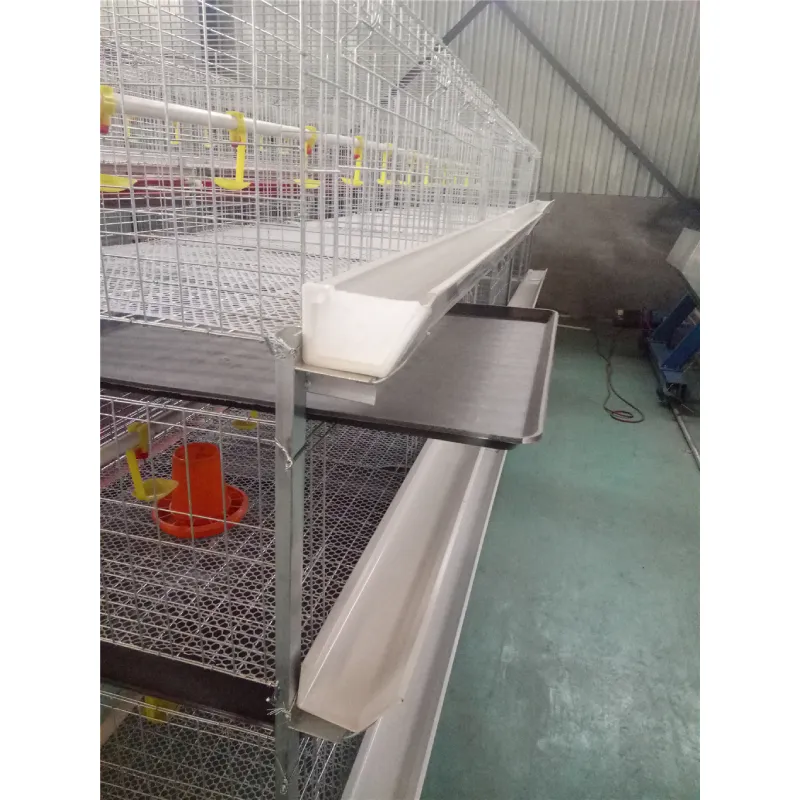poultry farming cage
Dec . 27, 2024 14:04 Back to list
poultry farming cage
The Future of Poultry Farming Embracing Cage Systems
Poultry farming has been a cornerstone of agricultural production worldwide, providing a significant source of protein in the form of chicken, turkey, and duck meat, as well as eggs. Among the myriad of techniques employed in poultry farming, cage systems have sparked considerable debate. These systems offer both advantages and challenges that have implications for producers, consumers, and animal welfare advocates alike.
Cage systems in poultry farming refer to the confinement of birds in controlled environments where they are housed in individual enclosures or cages. Traditionally, these systems have been used primarily for laying hens, but they are increasingly being adopted across various sectors of poultry farming. The basic premise behind cage farming is efficiency—both in terms of space and resource usage.
Advantages of Cage Systems
One of the primary benefits of cage systems is their ability to maximize space utilization. In commercial operations, especially those focused on egg production, cage systems allow farmers to house a larger number of hens in a smaller area compared to traditional free-range systems. This not only makes it possible to produce more eggs per square foot but also optimizes labor costs, as managing a smaller area can be less labor-intensive.
Moreover, cage systems often lead to improved biosecurity. With birds confined in cages, there is a reduced risk of disease transmission that can occur in more open environments. This is particularly crucial given the threat of avian influenza and other poultry diseases that can devastate flocks if not managed properly. With better control over the environment, farmers can implement more effective disease prevention measures.
Additionally, from a feed conversion perspective, caged birds typically exhibit improved feed efficiency. This means that they can convert feed into body weight or egg production more effectively than their free-range counterparts. This can result in lower feed costs and higher economic returns for farmers, allowing them to maintain competitiveness in a market that is often dictated by price.
poultry farming cage

Challenges and Controversies
Despite the advantages, cage systems have come under fire for animal welfare concerns. Critics argue that keeping birds in cages restricts their natural behaviors, such as nesting, foraging, and social interactions. The ethical implications of confinement have led to a growing movement toward cage-free systems, driven by consumer demand for more humane farming practices.
Many countries have begun to legislate against traditional battery cages, pushing for enriched cages or cage-free environments. Enriched cages, which provide hens with more space and some amenities like nesting boxes and perches, aim to strike a balance between the efficiency of cage farming and the welfare of the birds. However, the transition to these systems often requires significant investment and changes in farming practices, which can be a barrier for some poultry producers.
The Path Forward
As the poultry industry continues to evolve, it will need to address the concerns surrounding cage systems while also embracing technological advancements. Innovations such as automation, artificial intelligence, and precision farming could help improve the efficiency of both cage and cage-free systems. For instance, smart sensors can monitor the conditions within the cages, ensuring optimal environments that enhance both productivity and welfare.
Ultimately, the future of poultry farming may not be a binary choice between cage and cage-free systems but rather a hybrid approach that incorporates the strengths of both methods while mitigating their weaknesses. As consumers become more educated about where their food comes from, and as industries adapt to changing regulations, poultry farming will need to innovate continuously.
In conclusion, cage systems in poultry farming present a complex interplay of benefits and challenges. As the industry responds to consumer demands and welfare considerations, innovative solutions will become increasingly important in shaping the future of poultry farming. The goal must be to find a balance that promotes efficiency while ensuring the humane treatment of birds, paving the way for a sustainable and responsible poultry industry.
-
Automatic Feeding Line System-Pan Feeder Nipple Drinker|Anping County Yize Metal Products Co., Ltd.
NewsJul.29,2025
-
Hot Sale 24 & 18 Door Rabbit Cages - Premium Breeding Solutions
NewsJul.25,2025
-
Automatic Feeding Line System Pan Feeder Nipple Drinker - Anping County Yize Metal Products Co., Ltd.
NewsJul.21,2025
-
Automatic Feeding Line System Pan Feeder Nipple Drinker - Anping County Yize Metal Products Co., Ltd.
NewsJul.21,2025
-
Automatic Feeding Line System - Anping Yize | Precision & Nipple
NewsJul.21,2025
-
Automatic Feeding Line System - Anping Yize | Precision & Nipple
NewsJul.21,2025






